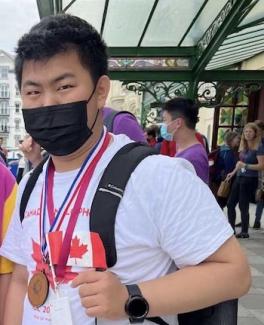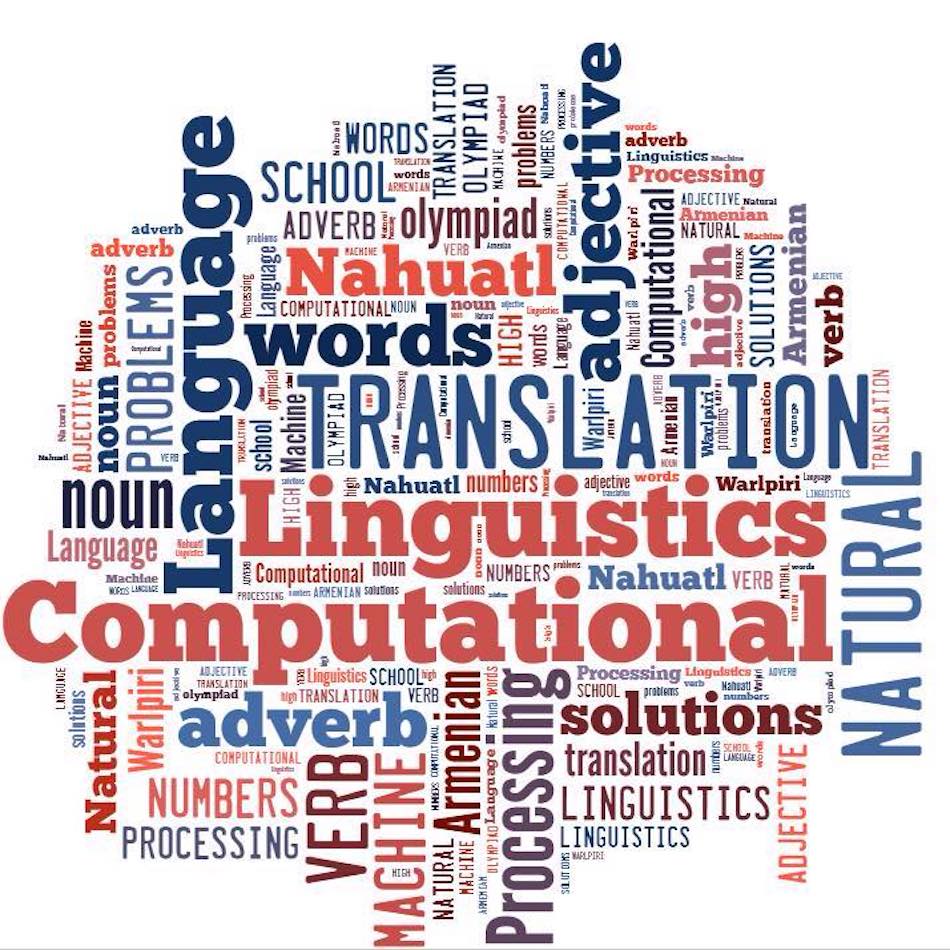A local student has won a bronze medal at the highly competitive 2022 International Linguistics Olympiad (IOL), held on the Isle of Man in the United Kingdom, after competing in the North American Computational Linguistics Olympiad (NACLO), hosted by the UBC Department of Linguistics.
Each year, the Department of Linguistics at UBC participates in NACLO, the language-oriented contest for high school students across Canada and the US. The contest has competitors solve a variety of difficult language-related puzzles which involve data from a wide variety of lesser-known languages, explained Yadong Liu, PhD student in the UBC Department of Linguistics and NACLO co-organizer.
“Many of the languages are low-resource languages, or even languages that have died. There are some written forms being kept and some documentation being done, but often times the language aren’t spoken anymore. The good thing about that is that it evens the playing field for the competitors, as it guarantees that none are native-speakers,” said Liu.

Kevin Yan, now a first-year student at UBC studying mathematics and computer science, competed in the 2022 NACLO open round competition at UBC in January of his grade 12 year of high school. After successfully making it through both the open round and the invitational round, Kevin went on to compete with the other top-scorers in Canada at the International Linguistics Olympiad on the anglophone national team in the summer, where he competed against high school students from around the world and won a bronze medal. This was the first time a student who took part in the NACLO first round at UBC won a medal at the IOL.
What’s particularly unique about this competition is that it doesn’t require participants to have any previous knowledge of language or linguistics. The bronze-medal winner, who has competed in math competitions over the years, but never any linguistics-related contests, shared that competing and doing well in NACLO and IOL is really about how you approach the problems.
“Anyone can participate in these competitions and do reasonably well, I would say,” said Yan. “Unlike other competitions, it’s not about your pre-requisite knowledge in the linguistics field. It’s just about your general problem-solving abilities and the practice you put in.”
Kaili Vesik, a PhD student in the UBC Department of Linguistics and NACLO co-organizer, who also happens to have a background in education, was excited to be involved with NACLO because of the opportunity to do outreach with high school students. She encourages students to participate in the competition and apply the various skills they’ve learned from their respective academic backgrounds.
“I think NACLO is a really cool way for students who are interested in math, computer science, or language to be able to explore a different application of the skills they’ve been using in other ways,” said Vesik. “The contest is also designed to have a low entry point, so it’s not like you’re going to walk in and one person is going to have a huge advantage over another because they’ve done linguistics before. None of the competitors have a linguistics background.”
The questions posed to competitors in both NACLO and IOL get progressively more difficult, and while there are practice questions and practice sessions available to participants, Liu expressed how impressed he is with the high school competitors who are successful in the competition.
“It’s even hard for us graduate students, who are training as Linguists, to complete the 13 questions in the open round within the three-hour timeframe,” said Liu. “It’s so impressive that the high school student competitors who don’t have any training in linguistics are able to figure out the computational patterns and puzzles in language, and score well-enough to continue on to the invitational round.”
Vesik explained that NACLO is a great entry-point for people to learn about linguistics, as oftentimes both students and teachers in high school aren’t aware of linguistics as a field.
“I think one of the things that is sad for me when it comes to linguistics is that most people in a high school environment, whether they’re teachers or students, have no concept of the existence of linguistics,” said Vesik. “This is one really cool way of introducing people to the idea that we can analyze language and solve language puzzles.”
Fortunately for students like Kevin Yan, NACLO has opened the door to a new interest in linguistics and the possibilities for future studies.
“One of the big things I’ve learned from this experience is how interesting linguistics can be,” said Yan. “It was this whole field that I didn’t know anything about before. I think that’s one of the main reasons NACLO and IOL exist; to show people what linguistics is about and how cool it can be.”
Click here to learn more about NACLO, and here to learn more about IOL.
Written by Kelsea Franzke
